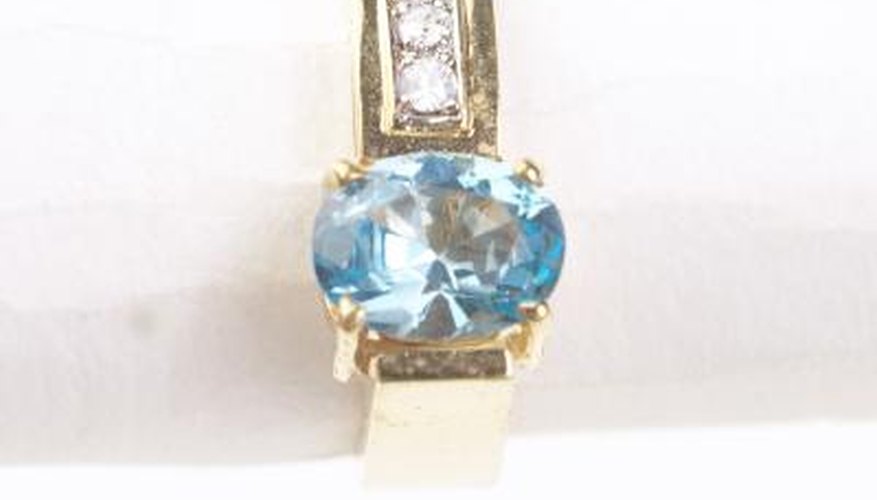Aquamarine gems are known for their blue colour that ranges from the light blue of the sky to deeper blues of the ocean. It is also the birthstone for March. Real aquamarine stones typically have a good hardness and a brilliant shine. This hardness protects aquamarine gems from being scratched. Aquamarine gets its colour from iron and the most valuable examples have the most intense colour. When shopping for aquamarine, be aware that some merchants try to pass glass off as the real deal. Luckily, a few tricks exist that can help you authenticate your aquamarine stone.
- Aquamarine gems are known for their blue colour that ranges from the light blue of the sky to deeper blues of the ocean.
- Aquamarine gets its colour from iron and the most valuable examples have the most intense colour.
Examine the surface of the gem for scratches. Aquamarine has a reputation for its hardness and does not scratch easily. If you notice scratches, it is likely glass.
- Examine the surface of the gem for scratches.
- If you notice scratches, it is likely glass.
Look closely at the stone. Search for tiny bubbles inside the gem itself. Aquamarine never produces bubbles. If you notice bubbling inside the gem itself, it is definitely glass.
Place the gem against your forehead. If it feels like it's room temperature, the gem is glass. Aquamarine will always feel cool against your forehead.
Look at the gem from different angles. Aquamarine is pleochroic, which means it shows different colours from different angles. Glass will look like the same colour from every angle.
- Place the gem against your forehead.
- Aquamarine is pleochroic, which means it shows different colours from different angles.
Take the gem to a jeweller or a gemologist for a professional examination if you still have doubts of its authenticity.
